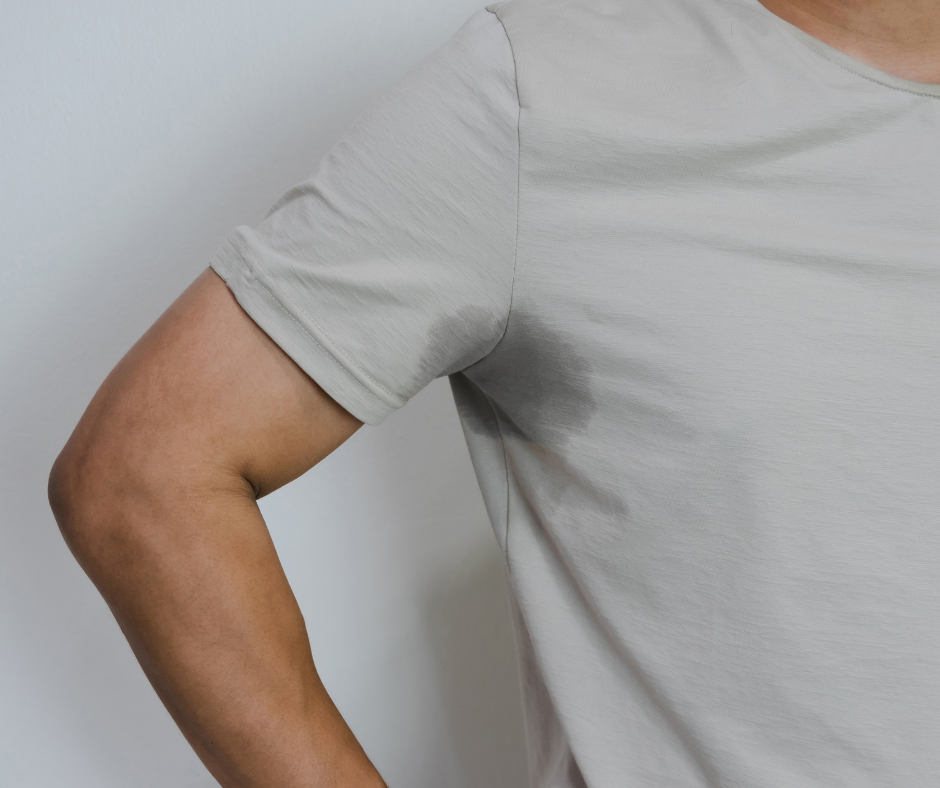Sweating is normal, and it helps the body release heat and cool itself. But some people sweat excessively, beyond warm temperatures and their environmental surroundings whether they are exerting energy or not.
This condition is known as hyperhidrosis.
Hyperhidrosis may be the result of stress or a genetic factor and is triggered by the body’s sympathetic nervous system which can overstimulate the sweat glands. It most frequently affects the scalp, face, palms of hands, and soles of the feet.
According to CTVS board-certified thoracic surgeon Dr. Matthew Gaudet, beyond the health issue, there can also be serious professional and social implications for those living with hyperhidrosis.
“If someone drives for work, sweaty hands may prevent them from safely gripping the steering wheel. A teacher might have trouble holding a marker or a piece of chalk to write on the board for their students. There are so many more examples of how it can negatively affect a person’s job performance.”
Dr. Gaudet adds that the anxiety and embarrassment caused by the abnormal sweating may affect one’s social life, even causing them to avoid social situations entirely.
The good news is that hyperhidrosis is highly treatable via both non-surgical and surgical methods.
What are some non-surgical treatment options for hyperhidrosis?
Non-surgical, or non-invasive, ways to treat hyperhidrosis include electrolysis, topical prescription creams, and Botox. Botox can be injected into the affected area to block the chemical that stimulates the sweat glands.
These treatments are often administered by a dermatologist. Although they are usually not a permanent fix for hyperhidrosis, they can offer some temporary relief.
For a more permanent solution to your hyperhidrosis, minimally invasive surgery, known as a sympathectomy, is often the best option.
What is a sympathectomy?
A sympathectomy is a minimally-invasive surgical procedure that severs the nerves connected to the affected sweat glands.
“What we do is cut two small incisions on either side of the chest in between the ribs,” explains CTVS board-certified thoracic surgeon Dr. Rachel Medbery.
“Then we go in with a little light and camera, and there’s a small little nerve that runs up and down along each side of the spine. And so we’ll go in on one side and we interrupt those nerve fibers, and then we go to the other side and do the same thing.”
Dr. Medbery says that each side takes about 20 minutes, so it is a relatively quick and straightforward procedure affording patients a typically quick and speedy recovery.
For those looking to cure their hyperhidrosis and undergo a sympathectomy, Dr. Medbery urges that you seek care from a board-certified thoracic surgeon who is comfortable operating in the chest and recognizing the delicate nerve structures housed there.
What does recovery look like following a sympathectomy?
“Recovery is usually pretty quick because it’s small incisions, and there’s usually very little pain and very little downtime,” says Dr. Medbery.
After a post-op visit at around two or three weeks following the procedure, most patients are back to normal.
For questions about a sympathectomy, or any other cardiothoracic or vascular service, please visit ctvstexas.com or call us at (512) 459-8753 to schedule an appointment with one of our board-certified specialists.
Don’t forget to follow us on Facebook and Twitter and check our blog for regular updates.

